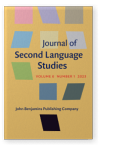Vol. 6:1 (2023) ► pp.29–60
How can we communicate (visually) what we (usually) mean by collocation and keyness?
A visual response to Gries (2022a)
Corpus linguistic methods can now be easily employed in a wide range of studies within sub-disciplines of linguistics and well beyond. In a two-part paper, Gries (2022a, 2022b) challenges some of the most widely used ‘association measures’ of what many might feel to be powerful aspects of text patterning: collocation and key words. While the additional association measure offers some new possibilities, this paper highlights the strong influence of another frequency parameter on odds ratio and Gries’s suggested association measure, and questions the applicability of his cautions for many different kinds of corpus research. Nevertheless, having been inspired to look at different aspects of association and dispersion more carefully, the author presents some new visualizations which were designed to communicate some of the important lessons to be learned from Gries’s papers, especially for learners and teachers using corpus tools in Second Language classrooms.
Article outline
- 1.Introduction
- 2.Definitions
- 3.Re-examining the roles of inputs for collocation measures
- 4.Keeping the Zipfian curve in mind for key words
- 5.Re-examining issues of dispersion measures
- 6.Conclusion
- Note
-
References
